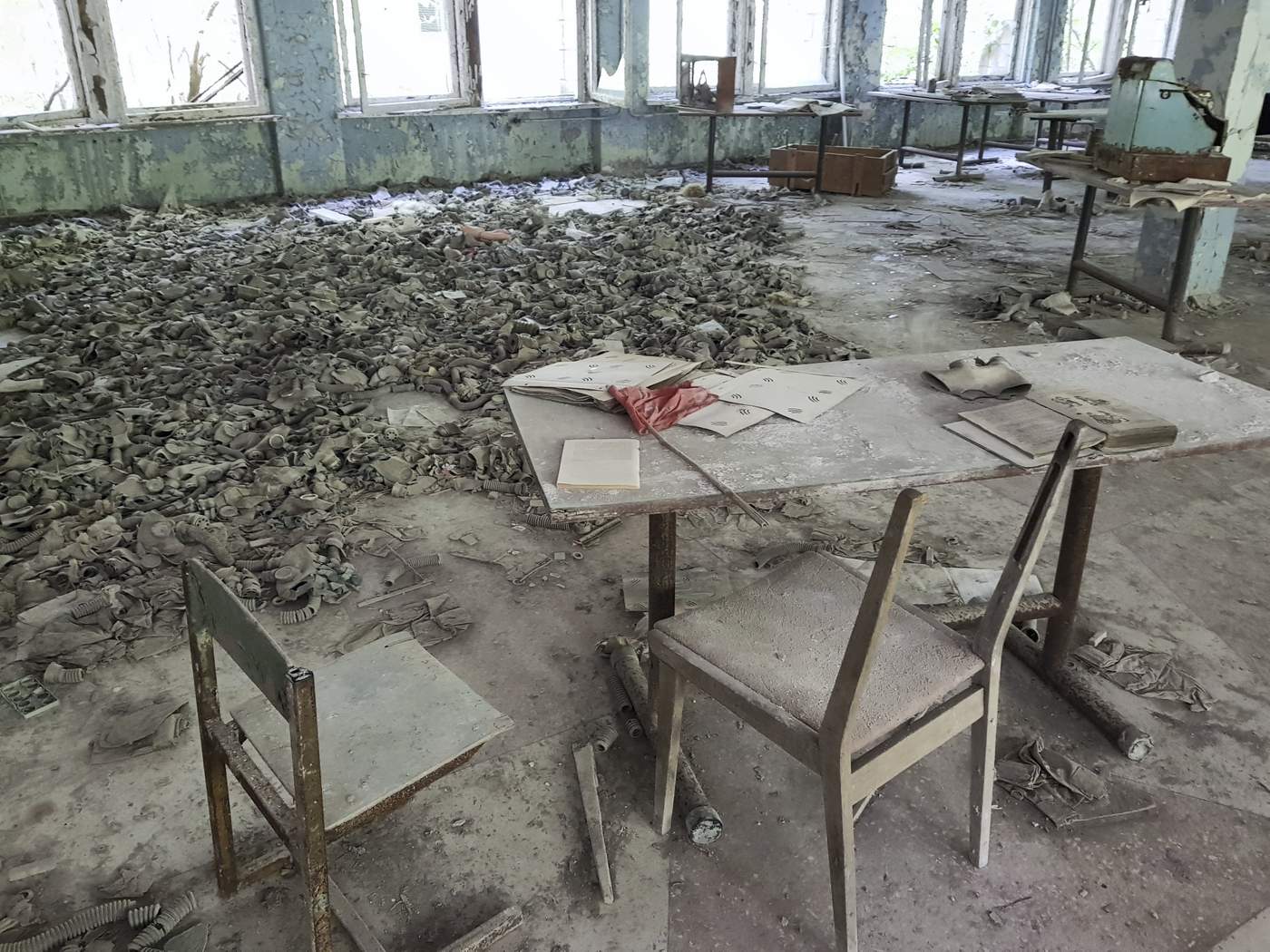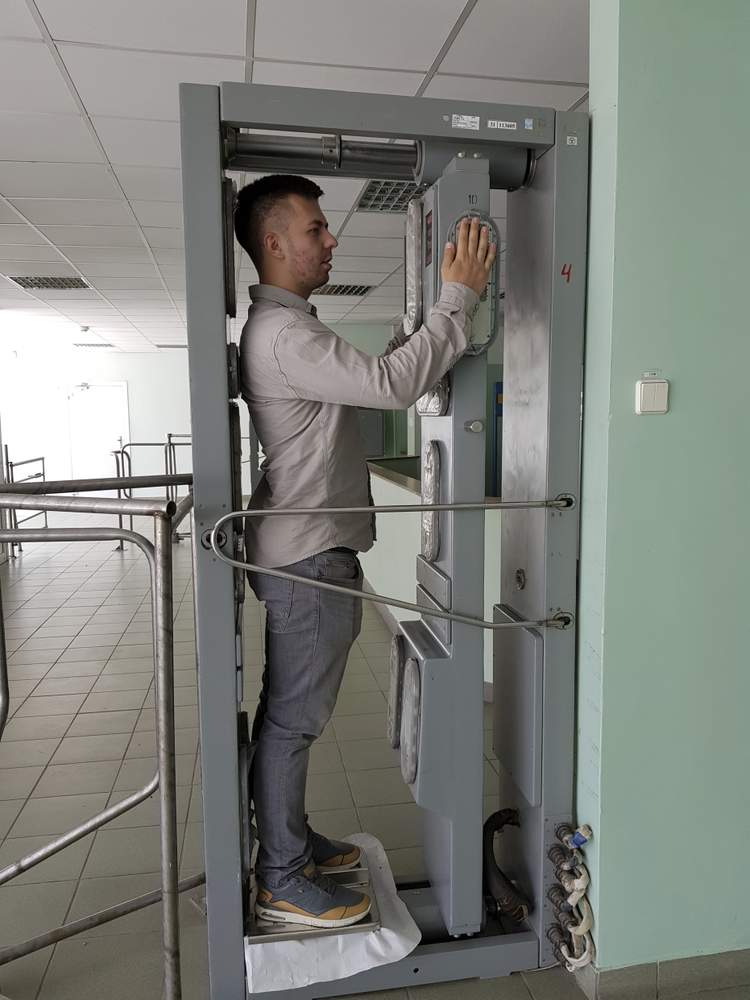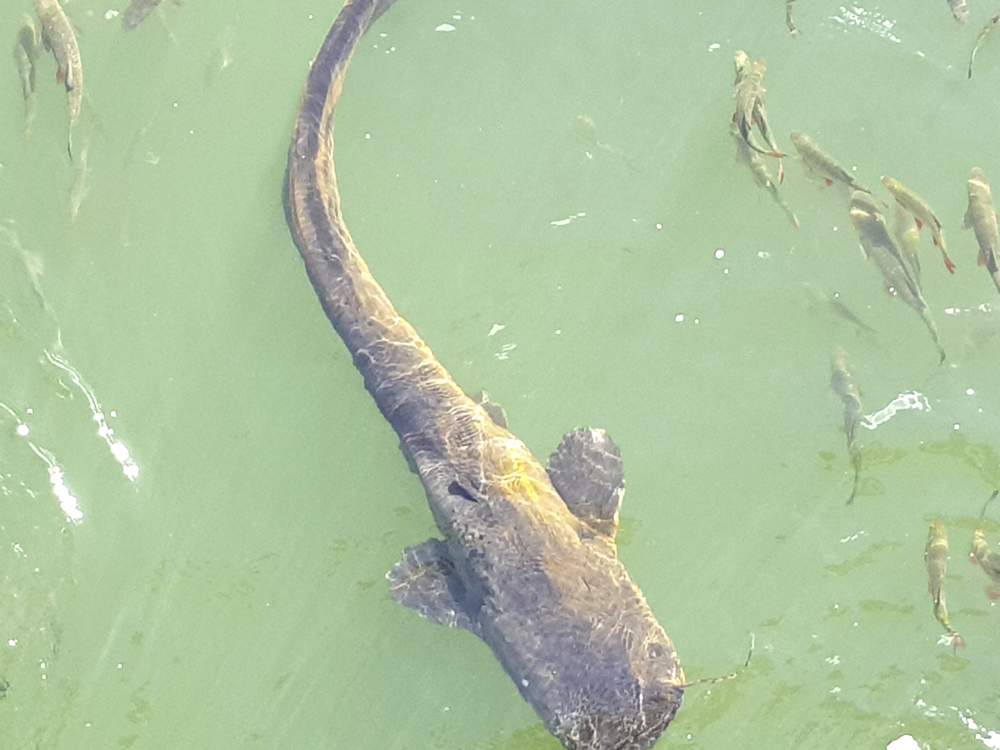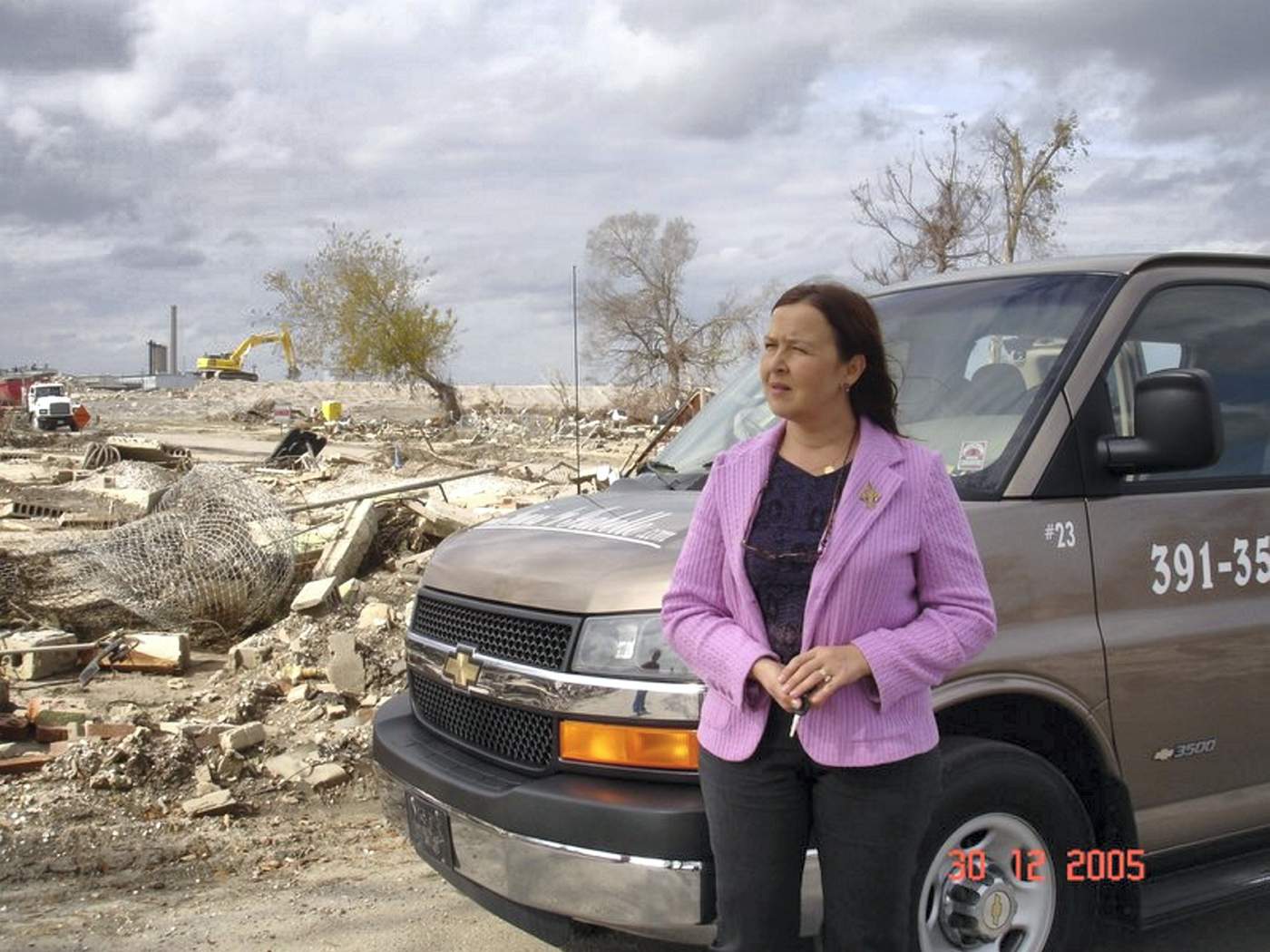The dark tourist in me is drawn to odd, exotic locations, for a quick weekend trip or sometimes even longer. It’s probably part of being a journalist.
The latest drew me to Ukraine and the site of one of the
world's most infamous nuclear disasters.
I was too young to understand the explosions at the Chernobyl nuclear facility, and five years after that, I only vaguely remember my parents explaining the USSR's disbandment.
However, I do remember spending time studying the Cold War and McCarthyism (coined after the US senator that accused various Americans for being communists, known as the “Red Scare”). And of course, throughout my travels, I’ve come to know many people who experienced all of the above first-hand.
So with each of my off-beaten trips, I attempt to learn something about a country, city or its people that expands what I've learned but isn’t common knowledge.
While on my Chernobyl tour, I climbed to an abandoned building’s rooftop and spotted a tower in the distance peeking through the overgrown landscape. Later our guide, Elena Lupekha, took my group closer and explained that this was initially built during the Cold War which spanned from 1947 to 1991. However, the outside world didn’t know of its existence until 1987 when a famous American TV talk show host came to town.
"The Donahue Show", hosted by Phil Donahue, took time away from more enjoyable TV programming in my youth - or so I thought. But prior to his interrupting daily talk show, Mr Donahue was a reporter on a mission.
Vladimir Pozner and Phil Donahue share a stage in Washington in 1991
He, along with Soviet journalist Vladimir Pozner, co-hosted “Space Bridges”, a show that was meant to get both sides talking. It attempted to break down the walls of suspicion to ease nuclear tensions.
My tour guide, Elena, explained that while Mr Donahue was touring Pripyat, the nearest town outside of the nuclear facility, he saw the same tower that was currently providing me shade. The American asked his Soviet handlers what they were to which one reply was that the government was constructing a hotel. The next person he asked said that the structure was a telecomm tower. He kept receiving varying answers which piqued his interest.
This was reportedly how the US government learned of their existence – as did all Western allies.
The steel mass was a detector, supposedly fit to warn Moscow if the US released any nuclear missiles giving the Soviet Union enough time to deploy their arsenal.
“If this was the case, why didn’t the towers pick up radiation levels from the nuclear reactor explosion,” I asked.
Elena responded that it appeared that while the tower was meant to detect any nuclear retaliation from the US, that the device never worked.
After hearing this story, I immediately began my research.
I was surprised that Mr Donahue was the first person to draw international attention to the structures, though unintentionally. However, my research turned up empty and gave me the impression that there still remains confusion around the tower’s purpose.
And who doesn’t love a mystery?
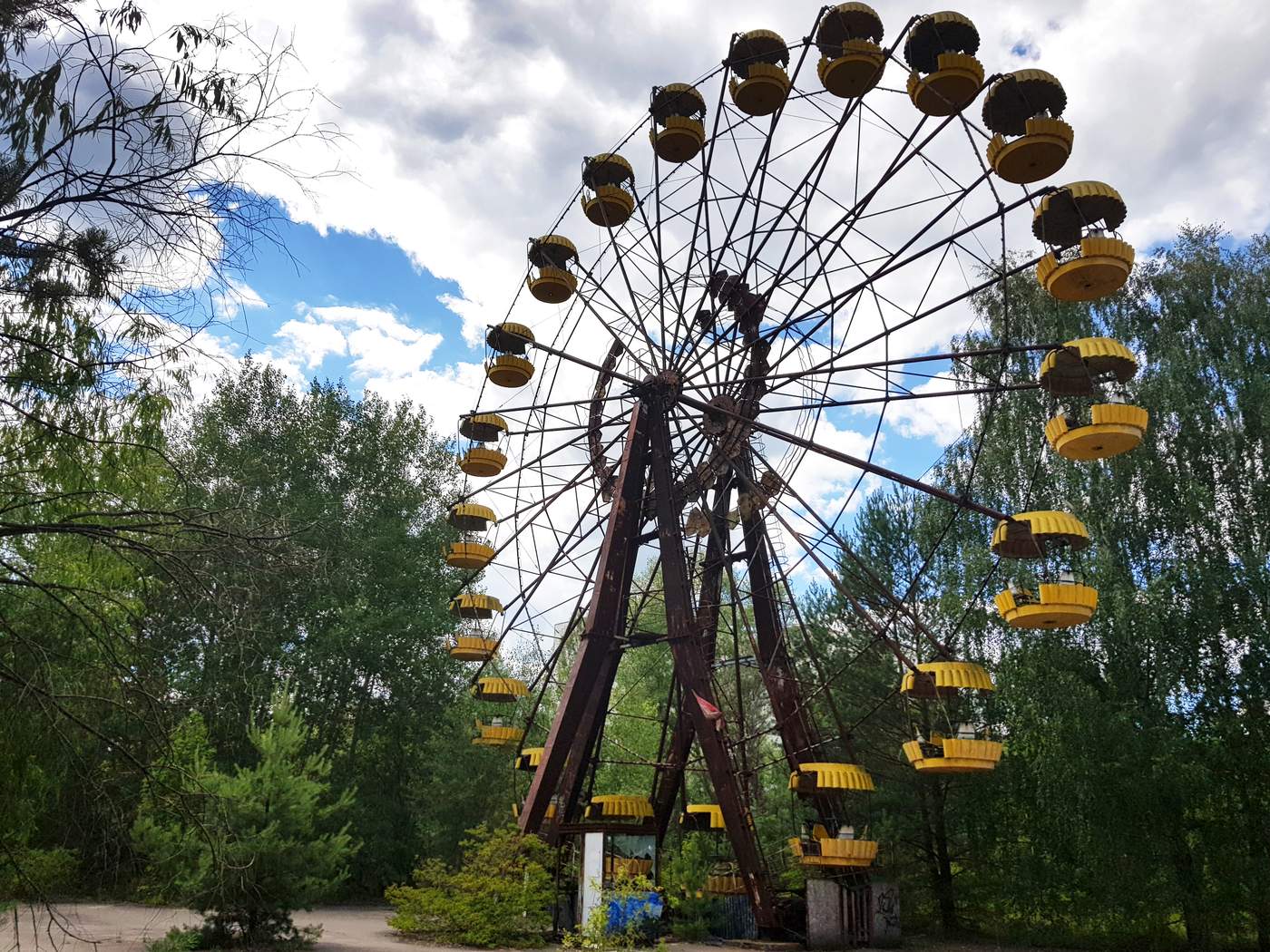
Chernobyl's iconic theme park. LeAnne Graves/The National
1948
Cold War starts between the US and the Soviet Union
1970-1977
First two of four reactors built for the Chernobyl nuclear power plant
1983
Reactors 3 and 4 were completed
1986
April 26
Fourth reactor explodes
April 29
Sweden detected the radiation leaks followed by Finland
Russia admits the reactor explosion
April 30
Evacuation begins
November 9, 1989
Berlin Wall falls
1991
Soviet Union collapses, creating 15 new nations, and ending the Cold War
August 24, Ukraine officially declared itself as an independent state
2004-2005
Orange Revolution - protests over presidential election fraud
2014
February
Ukrainian revolution - resulted in the president being impeached
April
Moscow-backed forces took control of Ukraine’s Crimean peninsula
The territory voted in a referendum not internationally recognised to join Russia
Valentina Borysivna believes that she has the same health issues as anyone her age. The Ukrainian, 78, spends her days doing house chores and gardening while entertaining guests including family and friends and even tourists.
It sounds normal, but the difference is that Ms Borysivna has lived in the town of Chernobyl her entire life.
“I think that it isn’t necessary for me to go somewhere else as people from all over the world come to visit me,” she said.
She was 47 when the nuclear power plant explosion occurred. Her husband, who passed away a couple of years ago, was working on a crane nearby and saw part of the reactor explode. He didn’t pay much attention and later that night, the pair went for a walk around town.
Valentina and her husband ran into a neighbor who was shocked to see them out and about. “The friend asked if we knew about the power plant explosion and said it was likely very serious and might require evacuation,” she said. “That’s how I learned about the accident.”
The couple remained in their homes until being evacuated on May 5, nine days after the meltdown. She was separated from her husband, children and grandchildren - each sent to different cities around the country.
Tour guide, Elena Lupekha, said this is a story told among all Chernobyl refugees.
“Members of one family, the wife, husband and children, were completely divided and sent to different cities and towns,” she said. “Even small children were sent to special ‘summer camps’ to be treated, taking parents months to find their kids.”
Meanwhile, workers known as liquidators sprung into action to contain the nuclear fallout. Around 4,000 people would eventually die from radiation exposure, according to the World Health Organisation (WHO).
Around 1,000 onsite reactor staff and emergency workers were exposed to the initial bursts of radiation on the first day. The WHO also said out of 200,000 emergency workers exposed over the course of the next year, a little more than 2,000 deaths would be linked to radiation.
Valentina returned to the disaster zone almost immediately after the forced evacuation. She and her husband would sneak in for almost a year before the Soviet government granted them an official permit to live in the exclusion zone.
She picked up work at a factory which delivered all the items left behind inside the zone to Kiev. Valentina said she decided to come back for two reasons.
“I loved Chernobyl because this is where I was born."
“My family had been divided and we wanted to stay together, even in this abandoned area without even life’s basics. I was grateful for the opportunity to come back and stay.”
The Babushka (Russian for grandmother) is one of about 176 self-settlers who returned to live in the exclusion zone along with 12,000 rotational employees, according to the State Agency of Ukraine. Valentina said that a few of her friends had moved back, though many are now deceased.
However, those deaths are not connected to the Chernobyl incident.
A great deal of research has been done, including the findings from more than 100 international scientists in a UN report.
An estimated 5 million people currently live in the main areas that were hit by the harmful pollution in Ukraine, Belarus and Russia. One-fifth of that total live in areas classified by government authorities as areas of “strict control”. The scientists said that about 4,000 cases of thyroid cancer, mainly in children and adolescents at the time of the accident, resulted from the contamination.
Nine children died as a result, but the survival rate among such cancer victims has been 99 per cent, based on experience in Belarus.
Radiation experts, Dr Jerry Cutter and Dr Myron Pollycove, wrote a paper dismissing the fear mongering around nuclear radiation saying that more than a century with radiation and six decades with nuclear reactors disproved the theory that a nuclear accident could kill hundreds of thousands. The pair said: “Negative images and implications of health risks derived by unscientific extrapolations of harmful effects of high doses must be dispelled.”
Valentina is a living testament to this, and has lived to see her grandchildren grow up to have their own children. She isn’t angry about what happened. “It’s now all gone, I can’t blame anyone and in my opinion, the government took good care of people,” she said.
What does she want people to know?
“I’m very open-minded and I’m so happy to meet people from different countries, because to me, it’s important that we all communicate with each other,” she said. “And I wish that more will visit Chernobyl.”
With that, she pulled out her accordion and played for a group of tourists with her dog, Donna, barking along to the music.
UAE-based adventure travel group, Trekkup Dubai, doesn’t just provide a trip to the nuclear disaster zone, but a Soviet-geared experience from shooting Kalashnikov assault rifles to driving an armoured vehicle.
It starts with a network of veterans from the Soviet-Afghan war who travel all over the world collecting combat relics.
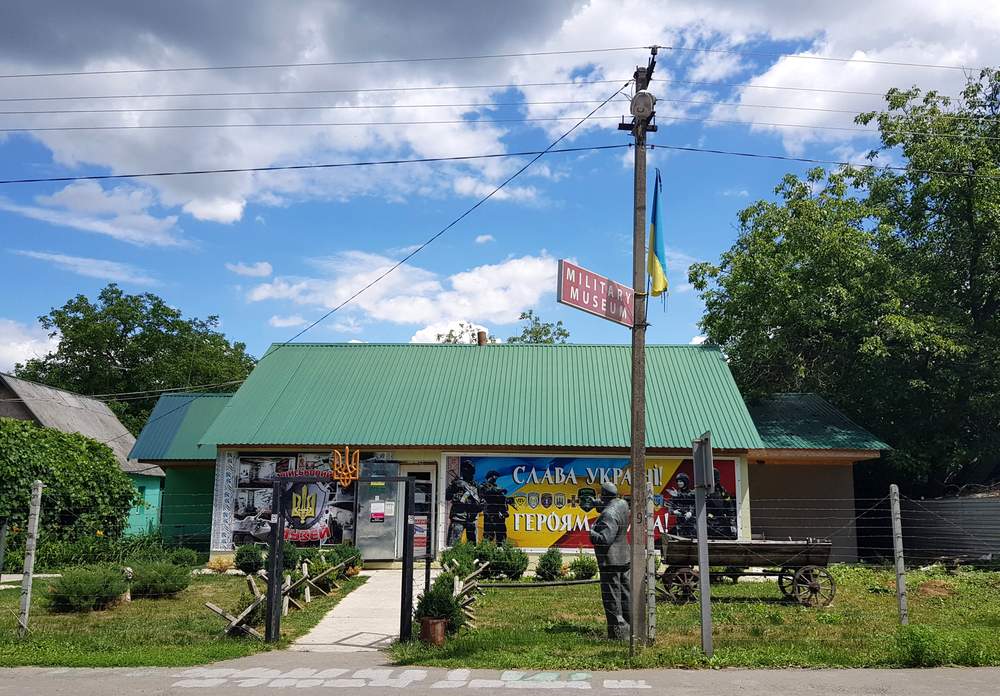
Home-turned-military museum outside of Kiev. LeAnne Graves / The National
One veteran ran a type of museum from his home, carrying various antiques from military-grade uniforms to traditional Taliban clothing, handwritten letters from Adolf Hitler and a photo collection of Joseph Stalin. The Russian-speaking owner begins telling stories of each find, taking two hours to cover the extensive collection.
Out back is a line-up of tanks, with tourists running to climb atop for the perfect selfie.
Our group then headed to a shooting range to test Kalashnikov and Dragunov sniper rifles as well as M-16s - activities that typically seem out of reach for the average civilian.
It got better when two armoured vehicles were introduced, giving us each a turn at driving.
The Boyevaya Razvedyvatelnaya Dozornaya Mashina (BRDM) is a combat reconnaissance patrol vehicle used by the former Soviet states. Making sharp turns thinking the amphibious armoured car will tip at any moment gives riders a sense of power and fear, but also excitement knowing that it is unlikely that many can one-up this vacation experience.
What's on offer for the dark tourist in Ukraine
The excursion also provides another vantage point than just the ones told by parents and grandparents from the Cold War era (as in my case). The impression that Ukraine will be cold in both weather and personalities was untrue. Language may be a slight barrier, but not impossible.
The capital of Kiev appears to be completely under-rated.
Walking the streets and music is everywhere with kiosks selling coffee and ice cream (mostly) as well as the odd dance party.
The cafes on the weekends are full of an eclectic mix of nationalities and when splitting the cheque among friends, it’s so inexpensive you decide to simply take turns at each venue.
The city was built on top of one large bomb shelter, thanks to the nuclear tensions between Russia and the US. This is evident when visiting the Arsenalna metro station, the world’s deepest metro station, with multiple escalator rides that lasts several minutes.
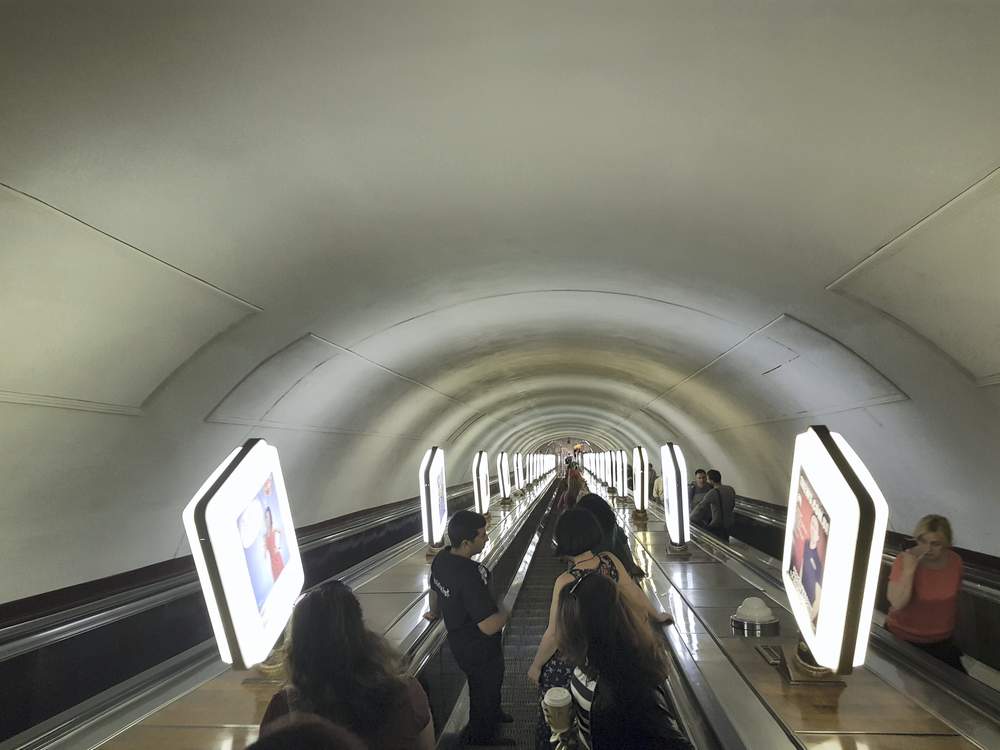
The Arsenalna metro station, the world's deepest. LeAnne Graves/The National
The station is 105.5 metres below the surface, and looking down can give the feeling of vertigo (I had to close my eyes).
The site of the world’s worst nuclear disaster is full of abandoned buildings that are overgrown with lush vegetation, but it has something more that no one expects: tourists.
Piotr Bural, founder of Dubai-based Trekkup, said that the idea to travel to the site had a personal meaning for him.
Growing up in Poland during the Soviet Union, Mr Bural was 13 years old when the fourth reactor at the nuclear power plant exploded.
“I was given iodine to drink. I can still remember the taste."
Potassium iodide, which contains a stable form of iodine, has been used to help protect against harmful radiation exposure which can lead to thyroid cancer. The Japanese government began distributing iodine tablets around the Fukushima area in 2011; however, Poland didn’t have tablets during that time and instead people drank a liquid mixture.
Mr Bural said that Poland actually followed information released from Sweden, which is why the country immediately took action to give the solution. But ultimately, residents weren’t sure if the information they were given was correct.
“Living in Soviet Poland, we never knew the truth. I was interested to see, to touch this place and learn more about the reality,” he said.
The Dubai-based group began taking travellers from the UAE to Ukraine in May, with a day trip to Chernobyl. The company has since completed three tours to the site, totalling 36 people. And there are more planned for next year as the demand continues.
Tourism in Ukraine is rising again after dropping drastically in 2014 as political tensions mounted with Russia.
Total visitors to Ukraine totalled 13 million people, with 19 per cent of that total as organised tourism, according to the
Ukrainian State Statistics Service. The number has started showing signs of growth, to the tune of 8 per cent from the previous two years, after a sharp drop in 2014.
The problems started when Moscow-backed president Viktor Yanukovych was ousted from power as protesters took over Kiev in February 2014. Two months later, Russia seized control over the Crimean peninsula after a referendum was passed, although the international community considers this illegal.
While the region had been granted autonomous power in 1996, the Ukrainian constitution mandated that Crimean legislation must be in line with Ukraine. Russia’s annexation of the peninsula has negatively impacted tourism to Ukraine, including the control over four airports.
Three airports are no longer in operation from the war in Donbas between pro-Russian separatists and the Ukrainian military. This includes the Sergey Prokofiev International Airport in Donetsk in eastern Ukraine, which carried more than 1 million passengers in 2013 while 41 per cent of its flights were for domestic travel.
This has impacted other airports in the country, particularly the capital’s Boryspil and Zhuliany airports. Both airports are destination for UAE airlines with Sharjah’s Air Arabia operating a daily flight to Boryspil and flyDubai heading to Zhuilany twice each day.
More than 9 million passengers fly into Kiev airports each year, but Zhuliany said that it had to make adjustments given the political events over 2013-2014. The airport said that passenger flow and flights dropped sharply which led to the closure of one of its terminals. However, the airport said that Kiev was showing signs of growth.
The Ukrainian State Statistics Service shows organised tourism plummeted to 147,000 in 2014 from more than 900,000 prior to the turmoil in 2012. Last year’s figures increased 18 per cent from 2014 levels, indicating growth, but the main pool of tourism from Russia is steadily declining.
The state recorded 45,000 visited for tourism last year out of the total 1.5 million travellers from Russia, an 86 per cent drop from highs in 2012. In addition, Belarusians - which make up the second highest population of international travellers, have also declined drastically after minor disagreements between Kiev and Minsk over over documentation for visa-free entry.
Piotr Bural, Trekkup Dubai founder, began taking groups to Ukraine this year for long weekend excursions. The first couple of trips were only for the weekend, costing around Dh3,100.
“Everyone liked it, so I thought there should be more to come,” he said. “The price of the trip has increased to Dh3,400, but we’ve also extended the duration to around four days.
“We have done three trips, but we make it more interesting with other activities such as tank riding,” he said. “We’ll do at least two more trips next year starting in May.”
Moving away from the standard beach hut holiday or ski resort weekend, disaster tourism is piquing the interests of travellers from all corners of the world.
Some places may not seem to fit this genre, such the volcano-buried Pompeii in Italy. Other sites such as Hiroshima and Nagasaki definitely fit the category, where interested travellers can go online to find locals for hire as guides.
While such tourism exists, it may be just an opportunity for those already visiting an area nearby.
More recently, people have flocked to see the aftermath of Hurricane Katrina, the third deadliest hurricane in US history and the costliest ever at US$108 billion in damage.
"People want to see for themselves what the flooded area they have seen reported on the news back 12 years ago looks like now."
The catastrophe cut through the heart of New Orleans tourism in 2005, forcing Tours by Isabelle to offer post-Katrina tours to stay alive. Owner Isabelle Cossart lost so much business that she had to slash her workforce and sell two vans. She turned to trips that showed the devastation, charging $49 per person (the same price as her former New Orleans City tours), which helped kick-start the company's recovery.
The next year she raised her prices to $53, followed by $58. By 2008, Ms Cossart had taken more than 17,000 tourists on Katrina tours, was able to purchase two new vans and hire back most of her former employees.
“I think people once in awhile still ask for these post-Katrina tours just because it’s still just human nature to be curious,” she said.
The “New Orleans City and Katrina Tour” now cost $85 and has taken a different turn. Devastation is no longer the main theme, but rather the rebirth of a city underway including Harry Connick Jr and Ellis Marsalis' restoration project: Habitat For Humanity's colourful Musicians' Village site. The site is seen as an island of hope and colour in the middle of the Upper Ninth Ward, an area still full of desolation and sadness.
Credits
Words: LeAnne Graves
Graphics: Alvaro Sanmarti
Photography: LeAnne Graves
Videos: LeAnne Graves
Video Editing: Andrew Scott and Emmanuel Samaglou
Editors: Mustafa Alrawi, Stephen Nelmes
Photo Editor: Jake Badger
Copyright The National, Abu Dhabi, 2017

